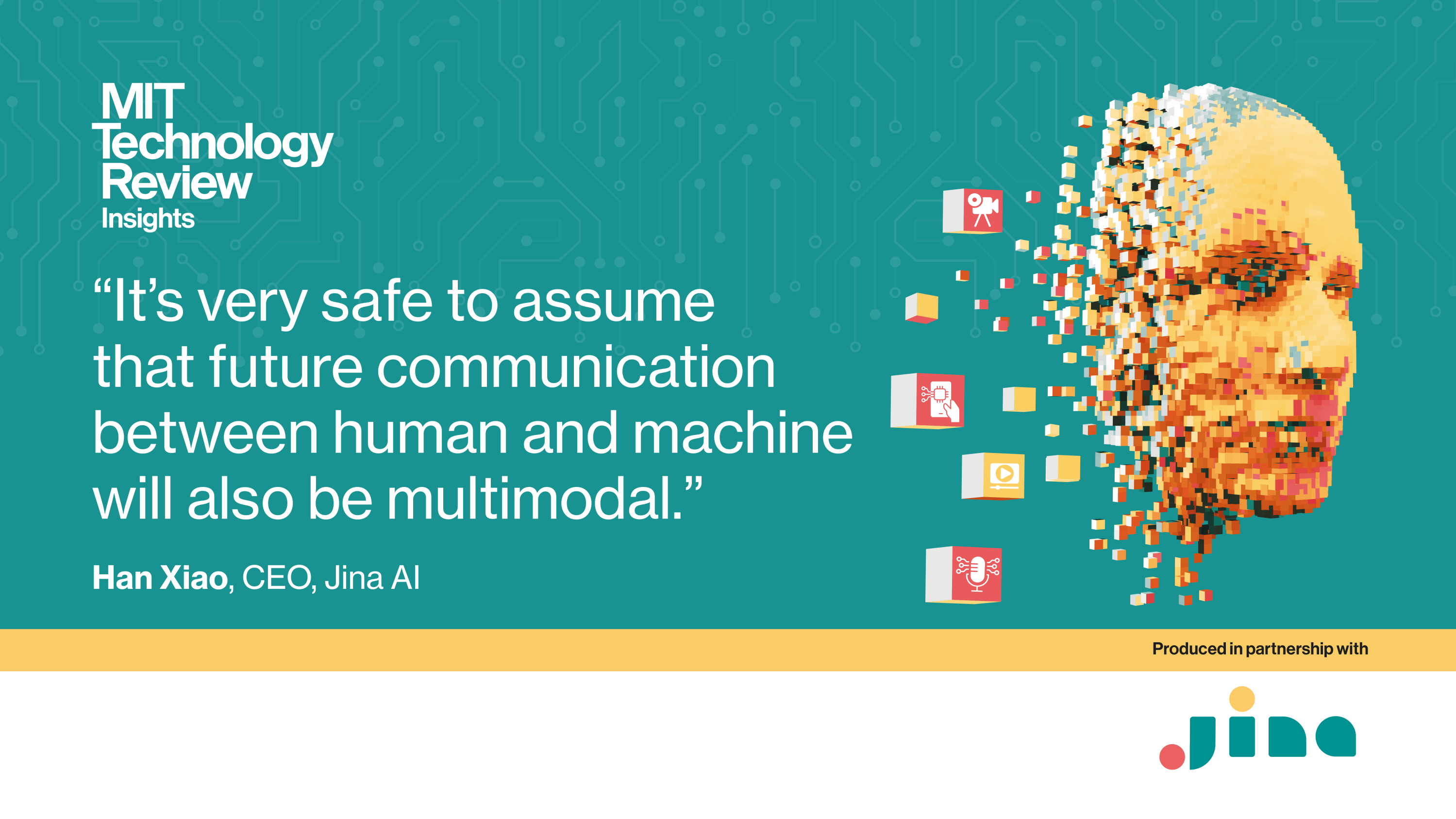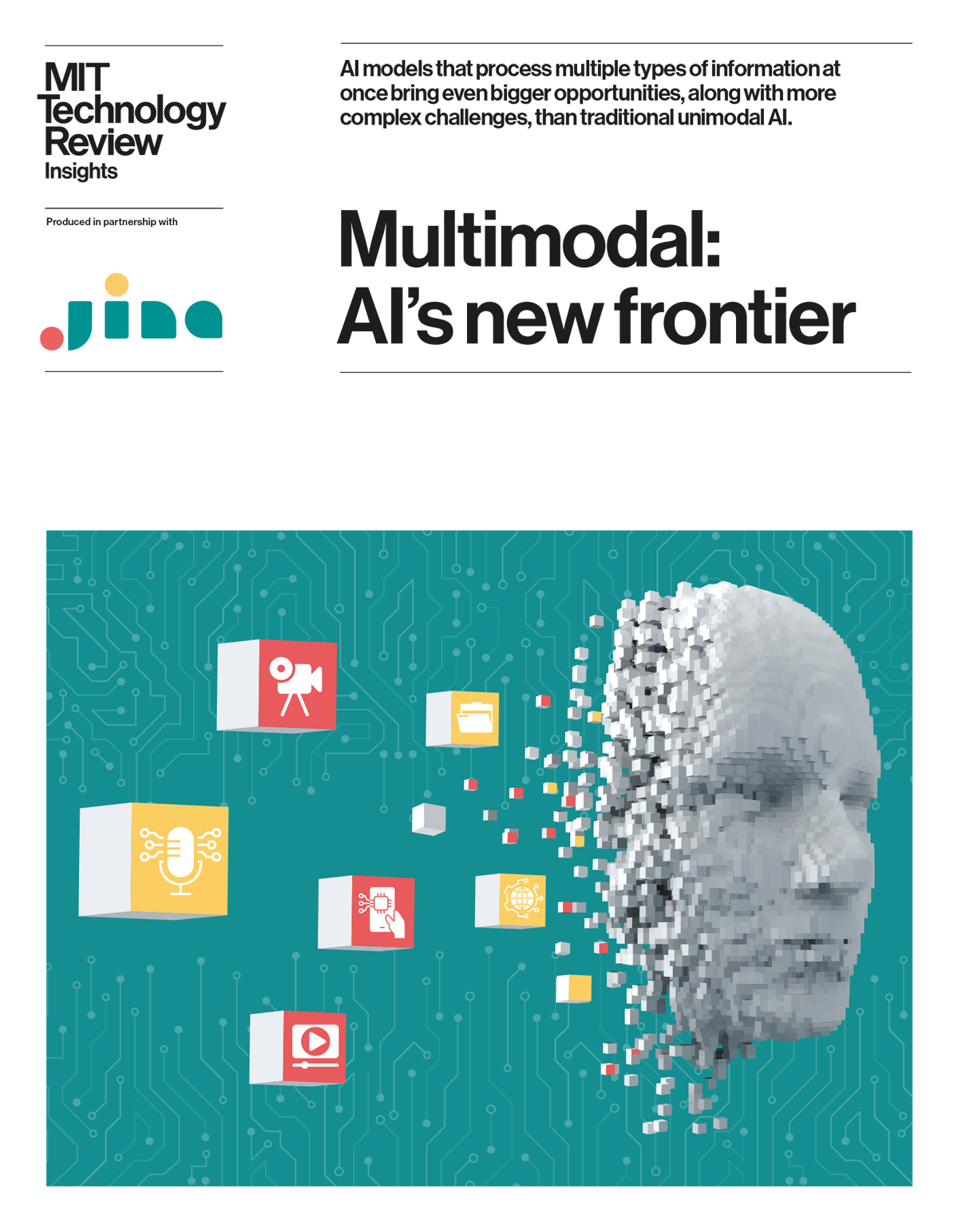Sponsored
Multimodal: AI’s new frontier
AI models that process multiple types of information at once bring even bigger opportunities, along with more complex challenges, than traditional unimodal AI.
In partnership withJina AI
Multimodality is a relatively new term for something extremely old: how people have learned about the world since humanity appeared. Individuals receive information from myriad sources via their senses, including sight, sound, and touch. Human brains combine these different modes of data into a highly nuanced, holistic picture of reality.
“Communication between humans is multimodal,” says Jina AI CEO Han Xiao. “They use text, voice, emotions, expressions, and sometimes photos.” That’s just a few obvious means of sharing information. Given this, he adds, “it is very safe to assume that future communication between human and machine will also be multimodal.”
A technology that sees the world from different angles
We are not there yet. The furthest advances in this direction have occurred in the fledgling field of multimodal AI. The problem is not a lack of vision. While a technology able to translate between modalities would clearly be valuable, Mirella Lapata, a professor at the University of Edinburgh and director of its Laboratory for Integrated Artificial Intelligence, says “it’s a lot more complicated” to execute than unimodal AI.
In practice, generative AI tools use different strategies for different types of data when building large data models—the complex neural networks that organize vast amounts of information. For example, those that draw on textual sources segregate individual tokens, usually words. Each token is assigned an “embedding” or “vector”: a numerical matrix representing how and where the token is used compared to others. Collectively, the vector creates a mathematical representation of the token’s meaning. An image model, on the other hand, might use pixels as its tokens for embedding, and an audio one sound frequencies.

A multimodal AI model typically relies on several unimodal ones. As Henry Ajder, founder of AI consultancy Latent Space, puts it, this involves “almost stringing together” the various contributing models. Doing so involves various techniques to align the elements of each unimodal model, in a process called fusion. For example, the word “tree”, an image of an oak tree, and audio in the form of rustling leaves might be fused in this way. This allows the model to create a multifaceted description of reality.
This content was produced by Insights, the custom content arm of MIT Technology Review. It was not written by MIT Technology Review’s editorial staff.
Deep Dive
Artificial intelligence
Sam Altman says helpful agents are poised to become AI’s killer function
Open AI’s CEO says we won’t need new hardware or lots more training data to get there.
An AI startup made a hyperrealistic deepfake of me that’s so good it’s scary
Synthesia's new technology is impressive but raises big questions about a world where we increasingly can’t tell what’s real.
Taking AI to the next level in manufacturing
Reducing data, talent, and organizational barriers to achieve scale.
Is robotics about to have its own ChatGPT moment?
Researchers are using generative AI and other techniques to teach robots new skills—including tasks they could perform in homes.
Stay connected
Get the latest updates from
MIT Technology Review
Discover special offers, top stories, upcoming events, and more.
